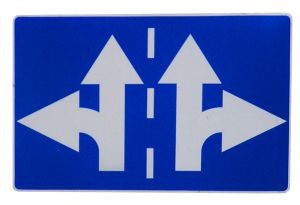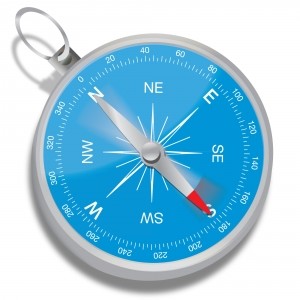By Craig Valency, MA, CSCS
As I discussed in the first post in this series, the missing link to true movement mastery is learning the 9 perceptual-motor skills as early as possible.
As fitness professionals, teachers, therapists, or parents, we have a unique opportunity to even the playing field by offering every child we work with an ideal environment to explore movement through all their senses.
These skills lay the foundation for an increased movement vocabulary with overall better coordination and the ability to learn the fundamental movement skills. With this foundation firmly in place, children are better equipped and more likely to engage in sports and recreational activities for a lifetime.
Here is a bird’s eye view of the 9 perceptual-motor skills we’re looking at in this series:
- Body: Understand the parts of the bodies and how they move
- Directional: Differentiate between the left and right sides of the body and move in all planes of motion
- Spatial: Has a sense of how much space one’s body takes up and moves comfortably around other people and objects
- Temporal: Has a sense of timing and rhythm
- Visual: Can visually focus and track objects
- Vestibular: Develop an internal sense of their body’s position in relation to gravity
- Auditory: Can accurately respond to sound
- Tactile: Can respond to touch in competitive situations to counter a move, as in wrestling, or in cooperative situations to stay with a partner, as in dance
- Proprioceptive: Interpret the internal sense of where the body is in space
Today, I’ll focus on directional awareness and discuss why it is so important and often taken for granted. I’ll outline what it is and give specific ideas that you can use to teach directional awareness in any youth fitness program.
 What is Directional Awareness?
What is Directional Awareness?
Directional awareness is really an extension of body awareness and refers to the level of a child’s body awareness as he or she moves in multiple planes through space. Relationships in movement with other people or objects are also stressed with directional awareness.
This is the sense that I most took for granted –which is ironic, considering I have a terrible sense of direction! I had always just assumed that kids knew the difference between their right foot and their left foot, or that they understood my commands to move forward, back, laterally, over, under, or in a zigzag pattern.
When I realized that close to half of the third graders I worked with raised their right arms when I asked them to raise their left arms, I was shocked. I’ve also worked with teens that had the same challenge. I realized that a large portion of them also had learning disabilities and other coordination issues. This all made more sense when I later learned about the strong link between perceptual-motor skills, also known as sensory awareness skills, and brain development. Perceptual-motor skills have been dubbed “learning readiness skills” for good reason!
The two aspects of directional awareness include external directional awareness, or “directionality,” and an internal directional sense, known as “laterality”.
- Directionality refers practically to the sense of where a child is moving in space, such as left, right, forward, backward, up or down.
- Laterality develops next, and is the internal sense of the right or left side of the body, and an ability to apply that concept to movement.
Teaching Directional Awareness
Just as in body awareness training, the best way to start is in a whole class warm-up where the various body parts are identified. In this case, however, stress the importance of identifying the right or left body parts or the top, bottom, or sides, as well as moving the body in specific directions.
For instance, instead of just calling out, “Touch your elbows,” or, “Put your knee on the floor and your hand on your hip,” reinforce laterality, the internal direction sense, by adding the specific locations. You could say, for example, “Touch your left elbow with your right thumb,” or, “Put your right knee on the floor and your left hand on your left hip.”
Here are some other activities for a variety of skill levels.
- Basic Directionality Commands: Use the basic commands of right, left, up, or down with the whole body or various body parts to reinforce the basic elements of directionality.
- Double Trouble: For an added coordination challenge, ask the children to move in two directions at the same time. For instance: “Lean to the left, while walking sideways to the right,” or, “Look right as you raise your left hand up.”
- Quick Feet Reaction Drill: Have the kids all assume an athletic stance with knees bent and a slight forward lean. Explain that the floor is on fire and very hot, so they have to quickly move their feet up and down. On your command, “Left!” they should quickly turn their whole bodies to face the left side and immediately return to the starting position. When you call, “Right!” they do the same to the right, when you say, “Up!” they should jump up and return to the starting position. On the command, “Down!” they should quickly assume a push-up position and immediately pop back up to the starting position, still quickly moving their feet.
- Head & Eyes Only!: Have the kids only turn their heads: up, down, left, or right. Next, have them only move their eyes in each direction as commands are called out.
- Opposite Direction Calls: Once kids have mastered moving quickly in all directions, it’s time to add a layer of cognitive processing by having them go in the opposite direction that is called out. When you say, “Right,” they should go left, and so on.
- Global Directions: Use compass points such as North, South, East, and West to help kids develop a sense of direction in their broader environment. Once they have that, increase the challenge by asking them to move northeast or southwest!

- Compass Lunges: Simply call out which foot to lunge with (laterality) and then call out the direction (directionality). For instance, “Right foot, North,” or “Left foot Southeast.” Their other foot should not move at all.
- Compass Balance Reaches: Call out a body part, a side, and what direction to move. For instance, “Standing on your left foot, reach your right hand Northwest,” or “Balancing on your right knee and left hand, move your right hand North/South/Southwest,” etc.
- Global Geography: now instead of just calling out the direction, use terms such as the North Pole, South Pole, equator or states, countries, borders, or oceans.

- Travel Circle: In this cooperation game, put kids in groups of three to six people. They are joined in a circle, moving together through the gym on your command. You could have them move North, South, East, or West. Better yet, have them visit Canada, Mexico, the Atlantic Ocean, or Pacific Coast! They must maintain contact with each other at the shoulder, back of hands, etc. They can be either facing in or out.
- Local Geography: for any directionality game switch to local geography such as moving toward the parking lot, the cafeteria, the street (name), the principal’s office, or the locker room.
- Circular Movements: Add in clockwise and counterclockwise (with the pervasive use of digital clocks this may be tough!) They can move alone in circles, spinning in place or following or leading a circular pathway, or as a group, as in the travel circle game described above, where they would have to move toward a geographical landmark while their group moves in a circle either clockwise or counterclockwise.
- Relationships with Other People or Objects: Now add in commands that help kids understand how and where to move in relation to other people and other things.
- With People:
- Crawl-Arounds: Have kids bear crawl over, around, under or alongside other kids. Call out direction changes, moving both forward and backward. Then switch to crab walks, repeating the same commands. Crank up the difficulty by having kids partner up and crawl side by side and react to the commands. Now have them face each other to increase the difficulty level as they will move in opposite directions when commands are called out.
- Human Cone Drill: Have a group of four to six kids stand in a line about 2 feet apart. Have the first in line weave through the “human cones” with a sprint, crawl, shuffle or any other movement pattern. Now he stands as a human cone at the end of the line and the next person in line now runs the “cones.”
- Variations: The “human cones” can be put in various positions such as feet wide, single leg stance, kneeling, sitting, lying supine, prone, in a plank position, crab position, doing jumping jacks, etc. You can also have each child choose his or her own unique position.
- With Objects:
- Walls: Have the kids travel parallel with or perpendicular to a particular wall in the gym.
- Cones: The children can do change of direction speed (CODS) drills with a cone. Have them go around the cones, stay to the left, stay to the right, or go over the cones. Also try adding patterns going forward, backward, or sideways. Add a laterality challenge, as they have to do it with their right or left foot only.
- With People:
Conclusion
The key to teaching directional awareness is to create an understanding of how to move in various planes of motion with simple terms, such as left, right, up, or down. Add complexity by teaching a more global sense of direction by using compass directions or geographic or local landmarks. Also stress internal directional sense, known as laterality by using various games that require them to identify their right or left limbs and the top, bottom, right or left sides of their body or specific body parts. Finally, teach directional awareness in relation to objects or other people.
In part 4, I’ll talk about spatial awareness and ways to help kids learn how their bodies are oriented in space and understand the difference between personal space, restricted space, and general space.
Craig Valency, MA, CSCS, president and co-founder of SPIDERfit, has been a personal trainer for the last 11 years. He is currently working at Fitness Quest 10 in San Diego, an elite personal training and athletic conditioning facility. He specializes in youth strength and conditioning programs that promote physical literacy, injury prevention and optimal performance. Along with training youths from 6 to 18 years of age for general fitness, Craig has also worked with some of the top junior tennis players in the world. He has been a physical education consultant for the Stevens Point school district in Wisconsin for the last 3 years, helping revamp the district wide programming for the K-12 PE curriculum. Craig earned his bachelor degree from UCLA, and Masters Degree in Kinesiology from San Diego State University.








Connect with SPIDERfit!